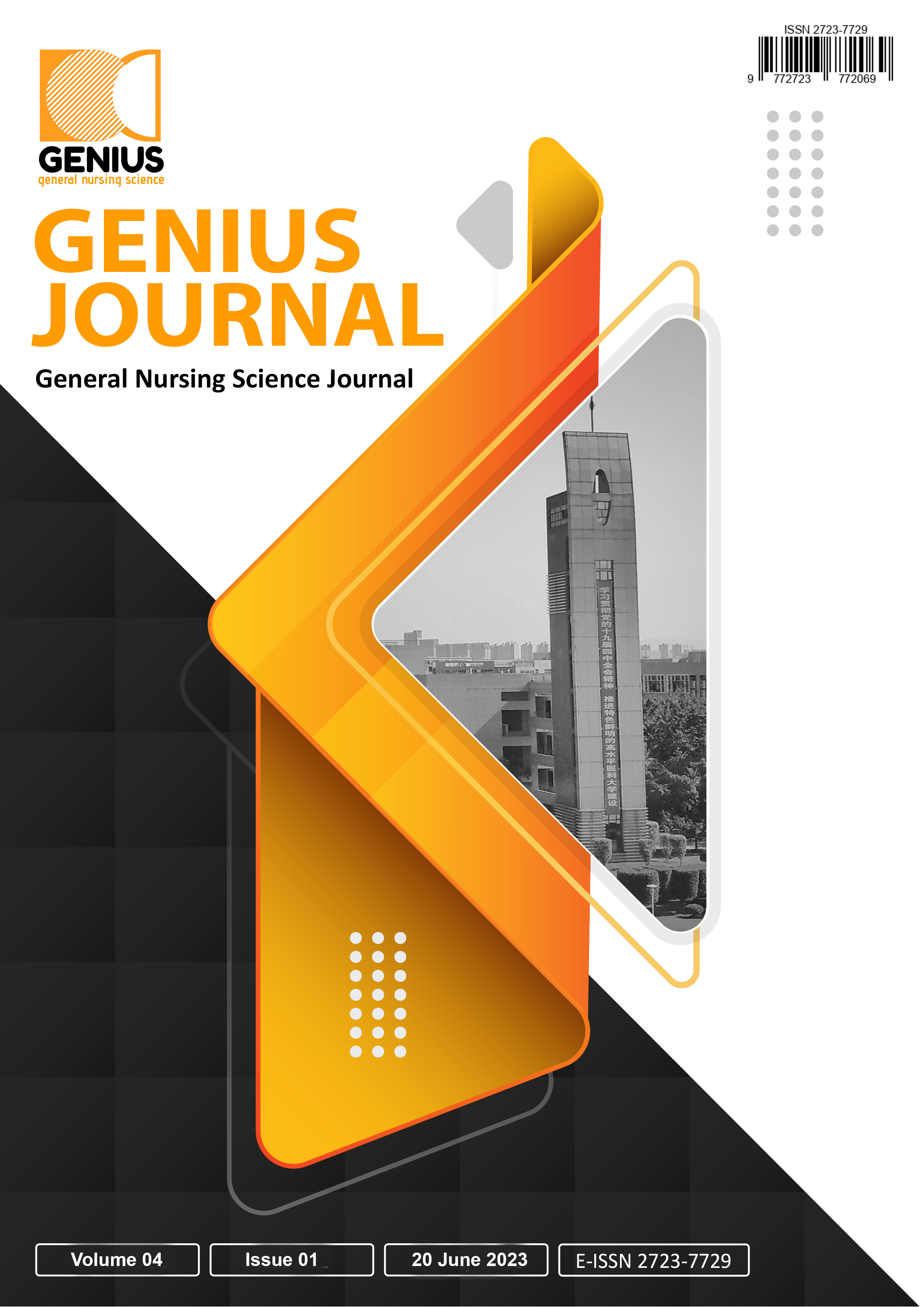Case Study: Deep Breath Intervention to Reduce Pain in Mild-head Injury Patients
DOI:
https://doi.org/10.56359/gj.v4i1.121Keywords:
breath relaxation, head injury, painAbstract
Objective: To present upbringing with deep breath intervention to reduce pain in patients with mild head injuries.
Methods: The method used is descriptive with a case study approach using nursing care that refers to the SDKI and SIKI books. The subjects in this study were 1 patient with a nursing diagnosis of acute pain in a patient with a minor head injury at the orchid room of the Banjar City Hospital. With data collection techniques include interviews, observations, physical examinations and documentation studies.
Results: From nursing care in patients with chronic renal failure, the symptom that appears at the time of the assessment is pain. The nursing problem that arises is that acute pain is related to physical injury agents referring to the SDKI book. The intervention carried out to reduce pain is by deep breath relaxation techniques. During the intervention process, the action went smoothly until the evaluation. There are changes in pain.
Conclusion: After deep breath intervention there was a change in pain from a scale of 5 to 2 (0-10), while the results of anamnesis obtained subjective data, the client said the pain was reduced.
Downloads
References
Andarmoyo, Sulistyo. (2013). Konsep & Proses Keperawatan Nyeri. Yogjakarta: Ar- Ruzz Media.
Arif, Muhammad., Sari, Yuli Permata. (2019). Efektifitas Terapi Musik Mozart Terhadap Penurunan Intensitas Nyeri Pasien Post Operasi Fraktur. Jurnal Kesehatan Mediaka Saintika.
Australian and New Zealand College of Anaesthetist (ANZCA) and Faculty of Pain Medicine (FPN). (2010). Acute Pain Management: Scientific Evidence 3th Edition. Diakses dari:http://www.anzca.edu.au/resources/collegepublications/pdfs/Acute%20P ain%20Management/books-and-publications/acutepain.pdf.
Badan Penelitian dan Pengembangan Kesehatan Kementerian Kesehatan RI. (2013). Riset Kesehatan Dasar 2013 (RISKESDAS 2013). www.depkes.go.id/resources/download/general/Hasil%20Riskesdas%202013 .pdf.
Setiadi. (2012). Konsep & Penulisan Dokumentasi Asuhan Keperawatan Teori dan Praktik. Yogyakarta: Graha Ilmu.
Smeltzer & Bare. (2013). Buku Ajar Keperawatan Medikal Bedah Brunner & Suddarth. Edisi 8 Volume 3. Alih Bahasa : Agung Waluyo. Jakarta: EGC.
Tarwoto, Wartonah & Suryati. (2007). Keperawatan Medikal Bedah Gangguan Sistem Pernafasan. Jakarta : Sagung Seto.
Trevana, L., & Cameron, I. (2011). Traumatic Brain Injury Long Term Care of Patients in General Practice. Focus Neurology, XL(12), 956-960.
Wang, C.F., Sun, Y.L., & Zang, H.N. (2014). Music Therapy Improves Sleep Quality In Acute And Chronic Sleep Disorders : A Meta-Analysis Of 10 Rand Omized Studies. International Journal Of Nursing. 51(2014), 51- 62.
Kusuma, A. H., & Anggraeni, A. D. (2019). Pengaruh Posisi Head Up 30 Derajat Terhadap Nyeri Kepala Pada Pasien Cedera Kepala Ringan. Jurnal Ilmu Keperawatan Dan Kebidanan, 10(2), 417. https://doi.org/10.26751/jikk.v10i2.699
PPNI. (2016). Standar Intervensi Keperwatan Indonesia: Definisi dan Tindakan Keperawatan. In Edisi I Cetakan II.
RSUP, B. L. U., Kandou, P. R. D., & Rottie, J. (2013). Efektifitas Teknik Relaksasi Nafas Dalam. ejurnal keperawatan (e-Kp) Volume 1. Nomor 1. Agustus 2013
Savitri, E. W., & Widia, N. (2021). Sebuah Study Kasus tentang Asuhan Keperawatan pada Pasien dengan Gangguan Sistem Persyarafan : Cedera Kepala Ringan. 6(2), 157–159.
Utami, M. P. S., Rahayu, N. W., Astuti, N. W., & Amerika, D. (2021). Perubahan Tingkat Kesadaran Pada Pasien Cedera Kepala Sedang ( CKS ) Dengan Terapi Oksigen Dan Posisi Head Up 30 ° : Literatur Review. 9, 52–57.
Downloads
Published
How to Cite
Issue
Section
License
Copyright (c) 2023 Genius Journal

This work is licensed under a Creative Commons Attribution 4.0 International License.




















